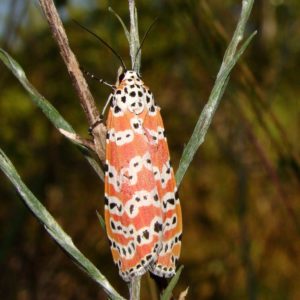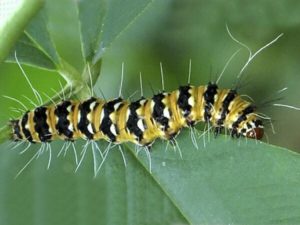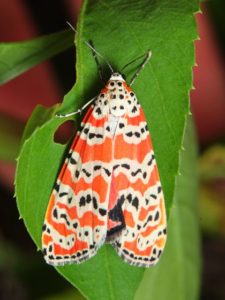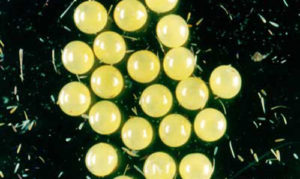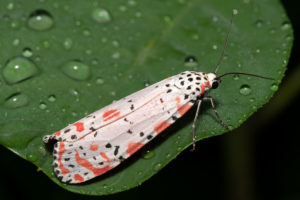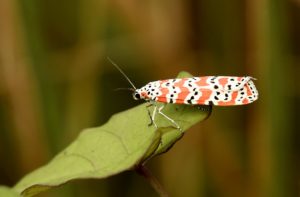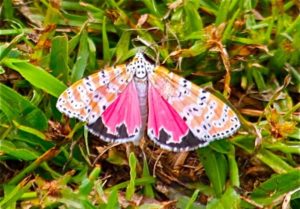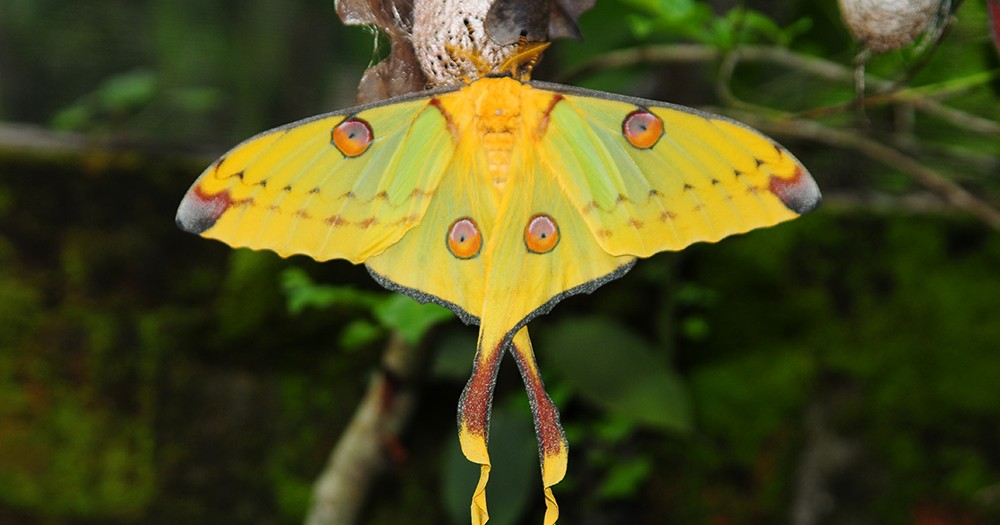Bella Moth (Utetheisa ornatrix)
The bella moth is an Erebidae moth found in the midwestern and eastern United States and parts of Mexico and Central America. Unique among moths, they are active during the day.
Both larvae and adults have alkaloids running through their system, deterring predators from feeding on them. The larvae sometimes cannibalize each other if they are alkaloid deficient, though they tend to avoid their kin.
Scientific Classification
- Family: Erebidae
- Genus: Utetheisa
- Scientific Name: Utetheisa ornatrix
Description and Identification
Pupa
Pupae are black, with orange-black irregular bands and a thin layer of silk covering them.
Adult Moth
Sexual Dimorphism: Present but not prominent.
Color and Appearance
Forewing: When the wings are opened, the colors range from orange, pink, red, and yellow. These bright colors serve as a warning to potential predators. When the wings are closed, white bands with irregularly spaced black spots are observed.
Hindwing: When the wings are opened, they are bright pink with a black band. When the wings are closed, the pink color remains completely hidden.
Average wingspan: 3.3-4.6 cm
Flight pattern: Erratic
Season: July to September
Quick Facts
| Other names | Ornate moth, rattlebox moth |
| Distribution | Nova Scotia to Florida, west to Minnesota, Kansas, and Texas. |
| Habitat | Fields and forest edges |
| Lifespan of Adults | 3 weeks |
| Host Plants | Primarily legumes like crotalaria or rattlepods, lespedeza, and lupines. Also, elm trees, fireweed, Prunus species, and sweet gale. |
| Adult Diet | Does not feed |
Did You Know
- These moths show complex mating strategies, with females mating with multiple partners who give “gifts” in the form of spermatophores containing alkaloids, nutrients, and sperm. The female will select her mate based on the quality of the gift received.
Scientific Classification
- Family: Erebidae
- Genus: Utetheisa
- Scientific Name: Utetheisa ornatrix

